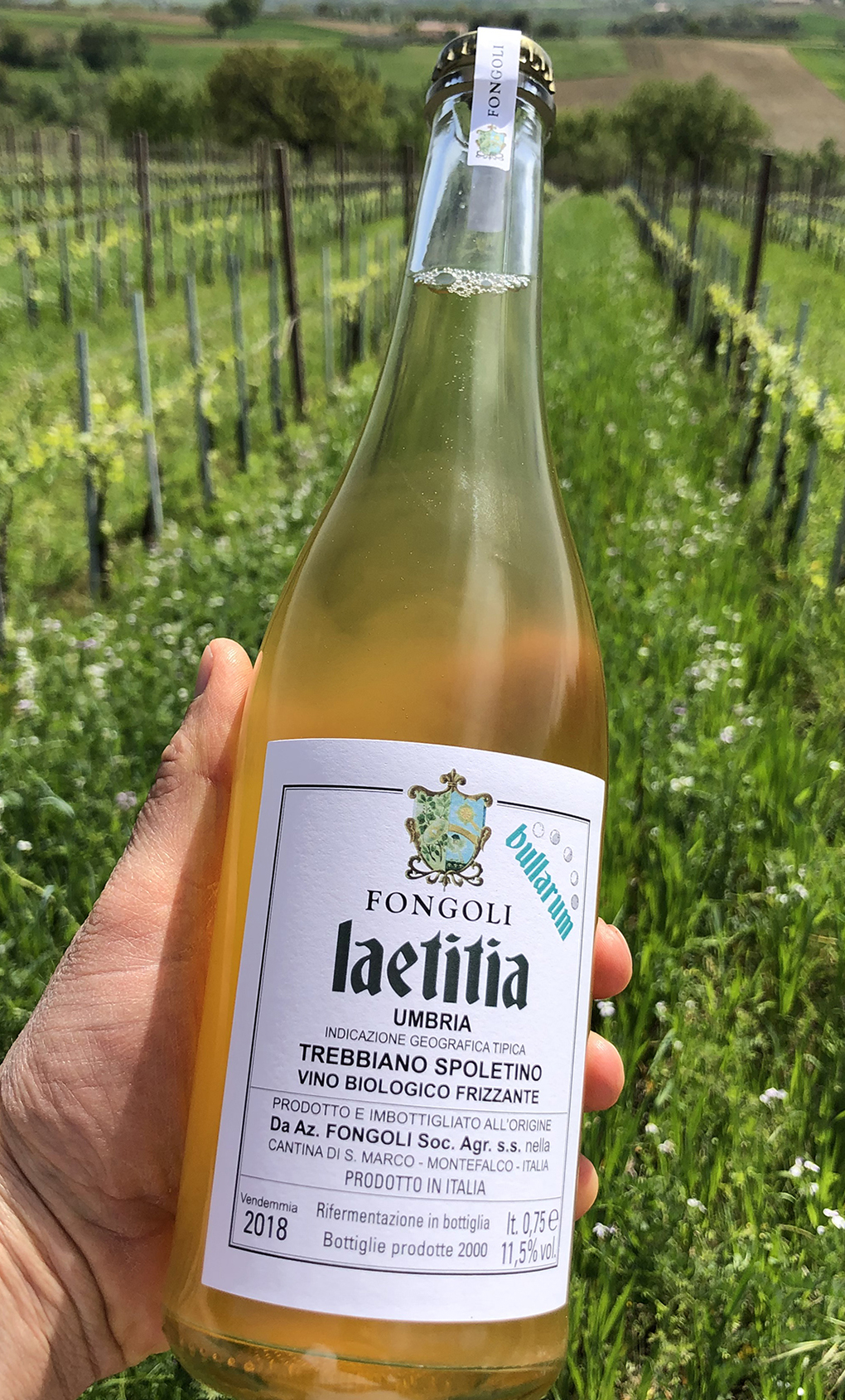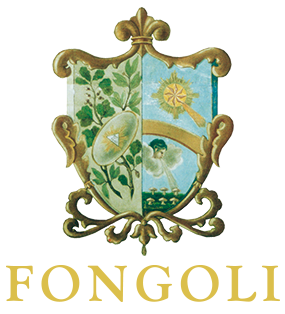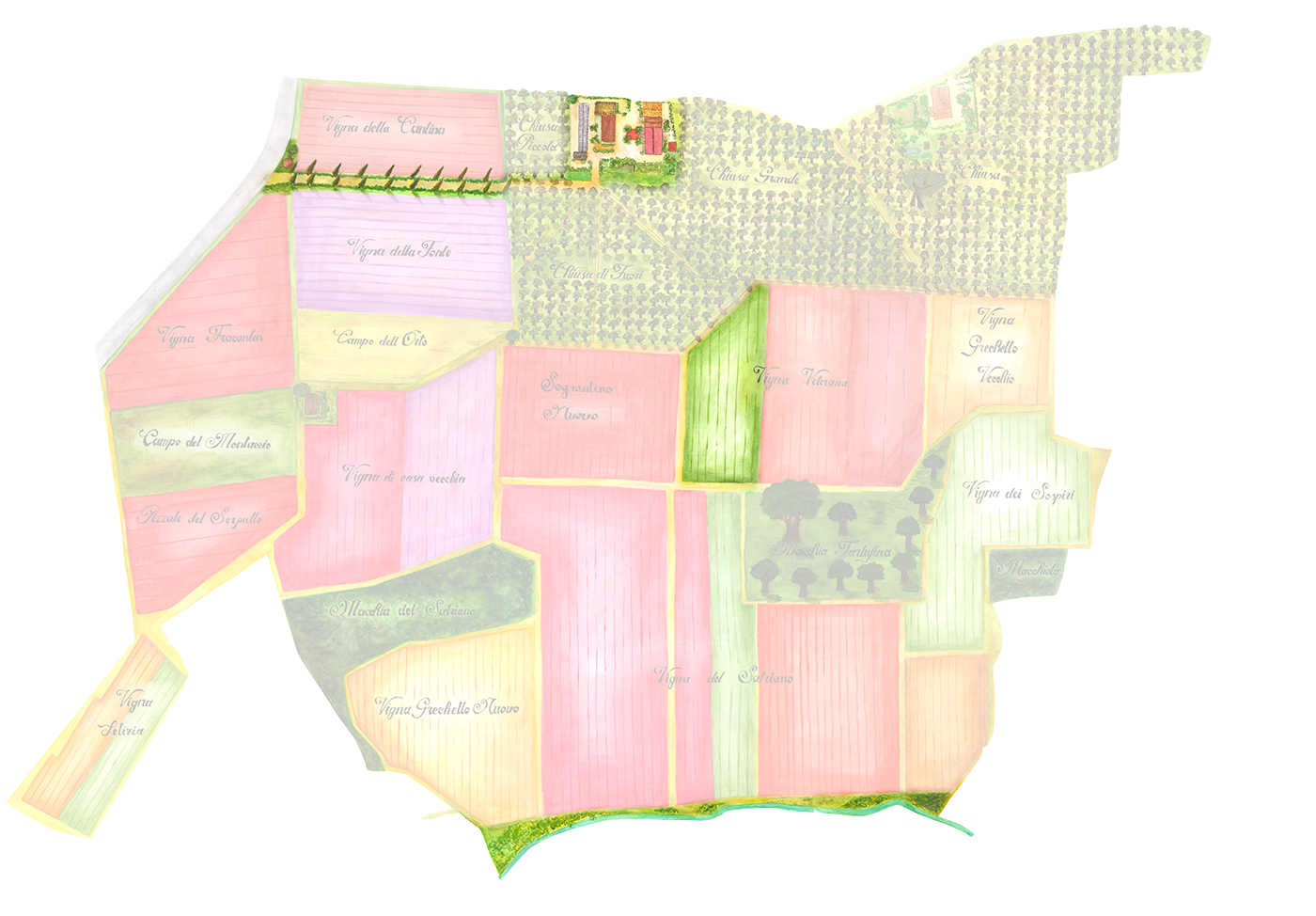Laetitia Bullarum
Trebbiano i.g.t Umbria

Soil: Clay/silt, whit a good skeletal structure, high in organic substance, and a good nitrogen-carbon ratio. Higher in active limestone, which makes it ideal for the quality of the wines.
Cultivation of the vineyard: The vines are cultivated using biodynamic techniques. Only copper, sulphur and biodynamic preparations are used as defence against disease. We work to increase the humus through green manure and biodynamic soil preparations. No synthetic chemical products are used.
Harvest: By hand, from the end of August to the first half of September.
Grape varieties: Trebbiano Spoletino 100%.
Vinification: TVinification
The grapes are harvested by hand in the period between the end of August and the beginning of September, they are collected from the first light of dawn until 11 a.m. maximum, in order to bring to the cellar a product as cold as possible; they are thus pressed directly with a horizontal soft press.
The flower must begins the fermentation process, which takes place naturally without pied de cuve, thus activating the saccharomyces yeasts through repeated racking that have the function of letting oxygen in and thus keeping the fermentation active.
All processes are optimized in order to achieve maximum cleanliness and taste-olfactory finesse.
During the first aging phase, the wine is tasted daily to avoid reductions and continuing the oxygenation work on a weekly basis.
Staying on the fine lees for 3 months. Once the resulting wine deemed stable and not reduced is clarified, the frozen must is inserted so that the second fermentation in the bottle can begin.
Bottled without addition of sulfur or filtration.
The flower must begins the fermentation process, which takes place naturally without pied de cuve, thus activating the saccharomyces yeasts through repeated racking that have the function of letting oxygen in and thus keeping the fermentation active.
All processes are optimized in order to achieve maximum cleanliness and taste-olfactory finesse.
During the first aging phase, the wine is tasted daily to avoid reductions and continuing the oxygenation work on a weekly basis.
Staying on the fine lees for 3 months. Once the resulting wine deemed stable and not reduced is clarified, the frozen must is inserted so that the second fermentation in the bottle can begin.
Bottled without addition of sulfur or filtration.
Bottle ageing: 3 months. Marketed in 75cL, 1,5Lt bottles.
Tasting:
Pale straw yellow with greenish reflections. The bouquet is fine and elegant, offering pleasant sensations of peach and exotic fruits. In the mouth the wine is soft, with significant acidity that provides freshness and a pleasant mineral note. Overall, the wine denotes elegance and balance.
Pairing suggestions:
Excellent as an aperitif with starters and fish dishes, fried vegetables and white meat.
Serving temperature: 11° - 12°C.
Serving temperature: 11° - 12°C.
Vintage available: 2021
Bottling data on the label, year 2021:
Total sulphur dioxide: < 10 mg/L
Volatile acidity: 0.43 g/L
Total acidity: 6.30 g/L
pH: 3.23
Alcohol content: 11,0 %
Total sulphur dioxide: < 10 mg/L
Volatile acidity: 0.43 g/L
Total acidity: 6.30 g/L
pH: 3.23
Alcohol content: 11,0 %

